- Home
- Elizabeth Bear
The Year's Best Dark Fantasy and Horror, 2010 Page 10
The Year's Best Dark Fantasy and Horror, 2010 Read online
Page 10
About the Author
Stewart O’Nan was born in Pittsburgh on George A. Romero’s and Alice Cooper’s birthday. His darker novels include The Speed Queen, A Prayer for the Dying, and The Night Country. His screenplay Poe was recently published in a limited edition by Lonely Roads Books.
Story Notes
No hint of the fantastic or supernatural, nothing truly shocking, just a quietly brilliant story with its own singular darkness. Stewart O’Nan’s “Monsters,” is a slice of everyday life. But it’s also, among other things, about learning there are “real things to be afraid of” and that no one’s life is entirely ordinary or free of shadows.
THE BRINK OF ETERNITY
BARBARA RODEN
The knife is long and lethal yet light, both in weight and appearance; a thing precise and definite, which he admires for those reasons. It has not been designed for the task at hand, but it will suffice.
The sound of a heart beating fills his ears, and he wonders if it is his heart or the other’s. He will soon know.
The knife is raised, and then brought down in a swift movement. A moment of resistance, and then the flesh yields, and vivid spatters spread, staining the carpet of white, bright and beautiful.
He brings the knife down again, and again. He can still hear the beating, and knows it for his own heart, for the other’s has stopped. He fumbles for a moment, dropping the knife, pulling off his gloves, then falls to his knees and plunges his bare hand into the bruised and bloody chest, pulling out the heart, warm and red and raw.
He eats.
WALLACE, William Henry (1799–?1839) was born in Richmond, Virginia. His family was well-to-do, and William was almost certainly expected to follow his father, grandfather, and two uncles into the legal profession. However, for reasons which remain unknown he abandoned his legal studies, and instead began work as a printer and occasional contributor of letters, articles, and reviews to various publications. In this respect there are interesting parallels between Wallace and Charles Francis HALL (q.v.), although where Hall’s Arctic explorations were inspired by the fate of the Franklin Expedition, Wallace appears to have been motivated by the writings of John Cleve Symmes, Jr. (1779–1829), particularly Symmes’s “hollow earth” theory—popular through the 1820s—which postulated gateways in the Polar regions which led to an underground world capable of sustaining life.
From We Did Not All Come Back: Polar Explorers, 1818–1909
by Kenneth Turnbull
(HarperCollins Canada, 2005)
He could not remember a time when he did not long for something which he could not name, but which he knew he would not find in the course laid out for him. The best tutors and schools, a career in the law which would be eased by his family’s name and wealth, marriage to one of the eligible young ladies whose mamas were so very assiduous in calling on his own mother, and whose eyes missed nothing, noting his manners, his well-made figure, strong and broad-shouldered, his prospects and future, of which they were as sure as he; surer, for his was an old story which they had read before.
But he chafed under his tutors, a steady stream of whom were dismissed by his father, certain that the next one would master the boy. School was no better; he was intelligent, even gifted, yet perpetually restless, dissatisfied, the despair of his teachers, who prophesied great things for him if he would only apply himself fully. He was polite to the mamas and their daughters, but no sparkling eyes enchanted him, no witty discourse ensnared him; his heart was not touched. He studied law because it was expected of him and he saw no other choice.
And then . . . and then came the miracle that snapped the shackles, removed the blinders, showed him the path he was to follow. It came in the unprepossessing form of a pamphlet, which he was later to discover had been distributed solely to institutes of higher learning throughout America, and which he almost certainly would never have seen had he not, however reluctantly, wearily, resignedly, followed the dictates of his family, if not his head and heart. Proof, if it were needed, that the Fate which guides each man was indeed watching over him.
The pamphlet had no title, and was addressed, with a forthright simplicity and earnestness Wallace could only admire, “To All The World.” The author wrote:
I declare the earth is hollow, and habitable within; containing a number of solid concentrick spheres, one within the other, and that it is open at the poles 12 or 16 degrees; I pledge my life in support of this truth, and am ready to explore the hollow, if the world will support and aid me in the undertaking.
JOHN CLEVES SYMMES
Of Ohio, Late Captain of Infantry.
He opened the pamphlet, his hands trembling. A passage caught his eye:
I ask one hundred brave companions, well equipped, to start from Siberia in the fall season, with Reindeer and slays, on the ice of the frozen sea: I engage we find warm and rich land, stocked with thrifty vegetables and animals if not men, on reaching one degree northward of latitude 62; we will return in the succeeding spring.
The words seemed to inscribe themselves on his heart. “One hundred brave companions”; “start from Siberia”; “find warm and rich land”; “return in the succeeding spring.”
In an instant he knew what it was that he had to do. After long years of wandering and searching, his restless feet were halted and pointed in the only true direction.
It is his first food in—how long? He has lost count of the days and weeks; all is the same here in this wasteland of white. He remembers Symmes’s “warm and rich land” and a laugh escapes his throat. It is a rough, harsh, scratched sound, not because its maker is unamused, but because it has been so long since he has uttered a sound that it is as if he has forgotten how.
The remains of the seal lie scattered at his feet; food enough to last for several days if carefully husbanded. There will be more seals now, further south, the way he has come, the way he should go. Salvation lies to the south; reason tells him this. But that would be salvation of the body only. If he does not continue he will never know. He fears this more than he fears the dissolution of his body.
He grasps the knife firmly in his hand—he can at least be firm about this—and begins to cut up the seal, while all around the ice cracks and cries.
One of the earliest pieces of writing identified as being by Wallace is a review of James McBride’s Symmes’ Theory of Concentric Spheres (1826), in which Wallace praises the ingenuity and breadth of Symmes’s theory, and encourages the American government to fund a North Polar expedition “with all due speed, to investigate those claims which have been advanced so persuasively, by Mr. Symmes and Mr. Reynolds, regarding the Polar Regions, which endeavor can only result in the advancement of knowledge and refute the cant, prejudice, ignorance, and unbelief of those whose long-cherished, and wholly unfounded, theories would seek to deny what they themselves can barely comprehend.”
From We Did Not All Come Back
His path was set. He threw over his legal studies, to the anger of his father and the dismay of his mother, and waited anxiously for further word of Symmes’s glorious expedition. How could anyone fail to be moved by such passion, such selfless determination, such a quest for knowledge that would surely be to the betterment of Mankind?
Yet no expedition was forthcoming. Symmes’s words had, it seemed, fallen on the ears of people too deaf to hear, too selfish to abandon their petty lives and transient pleasures. Wallace had fully expected to be a part of the glorious expedition; now, faced with its failure, he cast round for something that would enable him to dedicate his life—or a large part of it—to those Polar realms which now haunted him, in preparation for the day when Symmes’s vision would prevail, and he could fulfil the destiny which awaited him.
He became a printer, for it seemed that his only connection with that region which so fascinated him was through words; so words would become his trade. He found work with a printer willing—for a consideration—to employ him as an apprentice, and learned the trade quickly and read
ily. When he was not working he was reading, anything and everything he could to prepare himself. He read Scoresby’s two volume Account of the Arctic Regions and found, for the first time, pictures of that region of snow and ice, and of the strange creatures living there, seals and whales and the fearsome Polar Bear and, strangest of all, the Esquimaux who, in their furs, resembled not so much men as another type of animal. It was true that Scoresby scorned the idea of a “hollow earth”; yet he was only a whaling captain, and could not be expected to appreciate, embrace the ideas of someone like Symmes, a man of vision, of thought. Wallace expected more from Parry, that great explorer, and was heartened to find that the captain believed firmly in the idea of an Open Polar Sea, although he, like Scoresby, declined to accept a hollow earth.
Wallace knew that it existed, knew with his whole heart and soul that such a thing must be; those who denied it, even those who had been to the North, were either wilfully blind, or jealous that they had not yet managed to discover it, and thereby accrue to themselves the glory which belonged to Symmes. When Symmes came to Richmond on a speaking tour Wallace obtained a ticket to the lecture and sat, enthralled, while Symmes and his friend Joshua Reynolds preached their doctrine, hanging on to every word, eyes greedily devouring the wooden globe which was used by way of illustration, and displayed the hollows in the earth at the Polar extremities which led to a fantastic world of pale beings and weak sunlight.
In 1823 he heard that Symmes’s friend, the businessman James McBride, had submitted a proposal to Congress, asking for funding to explore the North Polar region expressly to investigate Symmes’s theory. Here at last was his opportunity; and he waited in a fever of excitement for the passing of the proposal, the call to arms, the expedition, the discovery, the triumphant return, the vindication.
The proposal was voted down.
He has been living thus for so long that his body now works like a thing independent of his mind, an automaton. The seal meat is still red, but no longer warm; the strips are hardening, freezing. He must . . . what must he do? Build a snow house for the night; yes. And then he must load the seal meat on to his sledge, in preparation for the next day’s travel. In which direction that will be he can not say. He does not know what lies ahead, what awaits, and it frightens him as much as it elates him; he does know what lies behind, what awaits there, and that frightens him even more, with no trace of elation whatever.
Following Symmes’s death in 1829 his theory largely fell out of favor, as a wave of Polar exploration failed to find any evidence of a “hollow earth.” Symmes’s adherents gradually deserted him, or turned their attentions elsewhere; Joshua Reynolds successfully lobbied Congress for funding for a South Seas expedition which would also, as an aside, search for any traces of a “Symmes hole,” as it came to be known, in the Antarctic. Although no sign of such a hole was found, the voyage did have far-reaching literary consequences, inspiring both Edgar Allan Poe’s The Narrative of Arthur Gordon Pym and Herman Melville’s Moby-Dick.
Poe published an article in praise of Reynolds, and the South Sea expedition, in the Southern Literary Messenger in January 1837; a reply to this article, penned by Wallace, appeared in the March 1837 issue. Wallace commends Poe on his “far-sighted and clear-headed praise of what will surely be a great endeavor, and one which promises to answer many of the questions which, at present, remain beyond our understanding,” but laments the abandonment of American exploration in the North. “A golden opportunity is slipping through our fingers; for while the British Navy must needs sail across an ocean and attack from the east, through a maze of channels and islands which has defied all attempts and presents one of the most formidable barriers on Earth, the United States need only reach out along our western coast and sail through Bering’s Strait to determine, for once and all, the geography of the Northern Polar regions.”
Elsewhere in the article Wallace writes of the Arctic as “this Fearsome place, designed by Nature to hold and keep her secrets” and of “the noble Esquimaux, who have made their peace with a land so seemingly unable to support human existence, and who have much to teach us.” These references make it clear that Wallace had, by 1837, already spent time in the Eastern Arctic, a fact borne out by the logbook of the whaling ship Christina, covering the period 1833–5. On board when the ship left New London in May 1833 was one “Wm. H. Wallace, gent., late of Richmond,” listed as “passenger.” In late August the log notes starkly that “Mr. Wallace disembarked at Southampton Island.”
Where he lived, and what he did, between August 1833 and March 1837 remains a mystery; Wallace left behind few letters, no journals or diaries that have been discovered, and did not publish any accounts of his travels. It has been assumed that he, like later explorers such as Hall and John RAE (q.v.), spent time living among the Inuit people and learning their way of life; if so, it is unfortunate that Wallace left no account of this time, as his adoption of the traditional Inuit way of life, in the 1830s, would mark him as one of the first white men to do so.
From We Did Not All Come Back
Even when Symmes died, and his theory looked set to die with him, Wallace kept faith. There would, he now knew, be no government-backed venture in search of the hollow earth; it would be up to one man of vision, daring, resolve to make his own way north. That man, he swore, would be William Henry Wallace, whose name would ever after ring down the annals of history.
Yet it was not fame, or the thought of fame, which spurred him on; rather, it was the rightness of the cause, the opportunity to prove the naysayers wrong, and a chance to break truly free from the shackles of his life and upbringing and venture, alone, to a place which was shrouded in mystery, to see for himself the wonders which were, as yet, no more than etchings in books, tales told by travellers. He had lived frugally, not touching the allowance still provided by his father, who hoped that the Prodigal Son would one day return to the family home; and with this he set out, early in 1833, for New England, where he persuaded a reluctant—until he saw the banknotes in the stranger’s pocketbook—whaling captain to let him take passage on board his ship. Only when the Christina had set sail for the north did William Henry Wallace, for the first time in many years, know a kind of peace.
But it was a restless peace, short-lived. He spent the days pacing the deck with anxious feet, eyes ever northward, scanning the horizon for any signs of that frozen land for which he longed. When the first icebergs came in sight he was overcome with their terrible beauty, so imperfectly captured in the drawings he had pored over until he knew their every detail as well as if he himself had been the artist. Soon the ice was all around, and while captain and crew kept a fearful eye on it always, Wallace drank in its solemn majesty, and rejoiced that each day brought him closer to his goal.
When the Christina left him at Southampton Island he was oblivious to the crew’s concern for a man whom they obviously thought mad. Yet they did not try to dissuade him; they had business to attend to, and only a short time before the ice closed in and either forced them home or sealed them in place for long, dreary months. The captain did try, on one occasion, to stop Wallace; but after a few moments he ceased his efforts, for the look in the other’s eyes showed that no words the captain could muster would mean anything. At least the man was well provisioned; whatever qualms the captain might have about his mental state, his physical well-being was assured for a time. And once off the ship he was no longer the captain’s concern.
Wallace had studied well the texts with which he had provided himself. In addition to clothing and food and tools, he had purchased numerous small trinkets—mirrors, knives, sewing needles, nails—and they paid handsome dividends amongst the Esquimaux, who were at first inclined to laugh at the kabloona come to live among them, but soon learned that he was in earnest about learning their ways. Before long Wallace had shed the outward garb of the white man and adopted the clothing of the Esquimaux, their furs and skins so much better suited to the land than his own cotton and wool garments. The
ir food he found more difficult, at first, to tolerate; it took many attempts before his stomach could accept the raw blubber and meat without convulsing, but little by little he came to relish it. His first clumsy attempts at building a snow house, or igloo, were met with good-natured laughter, but before long he was adept at wielding the snow knife, a seemingly delicate instrument carved from a single piece of bone which ended in a triangular blade of surprising sharpness. He learned to judge the snow needed for blocks, neither too heavy nor too light, and fashion the bricks so they were tapered where necessary. He learned to make windows of clear ice, and of the importance not only of a ventilation hole at the top of the structure, but of ensuring that it was kept free of the ice that formed from the condensation caused by breath and body warmth, lest it become a tomb for those inside.
The casual way in which the Esquimaux men and women shared their bodies with each other shocked him, at first; after a time he came to see the practicality of sleeping, unclothed under furs, in a group, but he remained aloof from the women who plainly showed that they would welcome him as a partner. In all other ways he admired the natives of that cold land: what other travellers remarked on as their cruelty he saw as a necessity. Illness or frailty in one could mean death for all; there was no room in that place for pity, or sentiment, and he abandoned without regret the last traces of those feelings within his own soul.
He became skilled at traversing the fields of ice and snow, and would often set out alone. The Esquimaux, who only ventured across the ice when necessity compelled them in search of food, were puzzled by his expeditions, which seemed to serve no purpose. In reality he was searching, always searching, for any indication that he was drawing closer to the proof he sought, the proof that would vindicate Symmes, and his own life. He did not mark, in that realm of endless snow, how long he searched; but eventually he realized that he would not find the answers he was seeking in this place of maze-like channels. Symmes had been correct when he said that the answer lay from the west, not the east; and if he had been correct in this, why should he not be correct in much else?

 Scardown
Scardown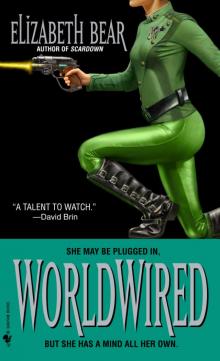 Worldwired
Worldwired Ancestral Night
Ancestral Night Hammered
Hammered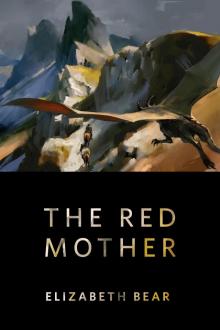 The Red Mother
The Red Mother The Red-Stained Wings--The Lotus Kingdoms, Book Two
The Red-Stained Wings--The Lotus Kingdoms, Book Two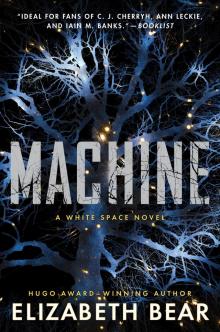 Machine
Machine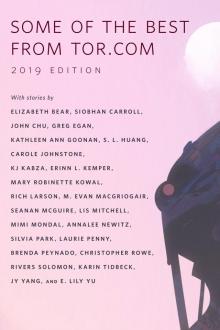 Some of the Best from Tor.com: 2019 Edition
Some of the Best from Tor.com: 2019 Edition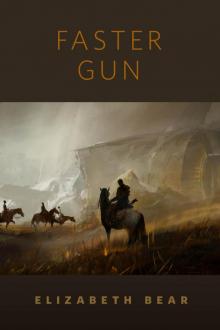 Faster Gun
Faster Gun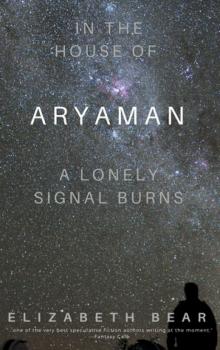 In the House of Aryaman, a Lonely Signal Burns
In the House of Aryaman, a Lonely Signal Burns Stone Mad
Stone Mad Robots: The Recent A.I.
Robots: The Recent A.I. The Tempering of Men
The Tempering of Men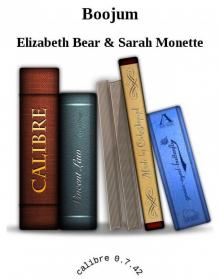 Boojum
Boojum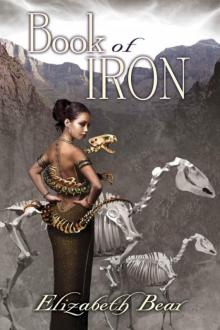 Book of Iron bajc-2
Book of Iron bajc-2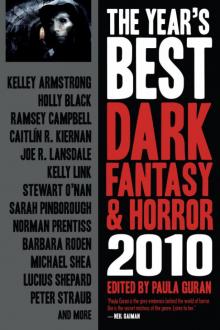 The Year's Best Dark Fantasy and Horror, 2010
The Year's Best Dark Fantasy and Horror, 2010 New Cthulhu 2: More Recent Weird
New Cthulhu 2: More Recent Weird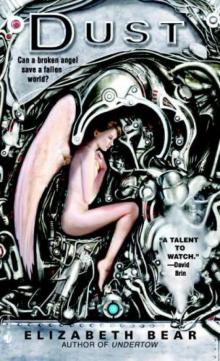 Dust jl-1
Dust jl-1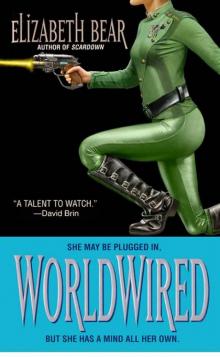 Worldwired jc-3
Worldwired jc-3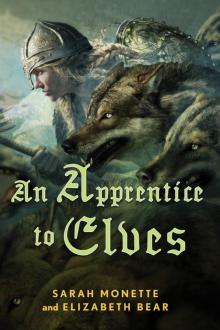 An Apprentice to Elves
An Apprentice to Elves Hammered jc-1
Hammered jc-1 Crowd Futures: We Have Always Died in the Castle
Crowd Futures: We Have Always Died in the Castle Bone and Jewel Creatures bajc-1
Bone and Jewel Creatures bajc-1 Carnival
Carnival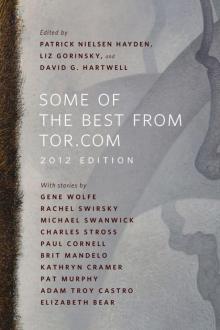 Some of the Best from Tor.com: 2012 Edition: A Tor.Com Original
Some of the Best from Tor.com: 2012 Edition: A Tor.Com Original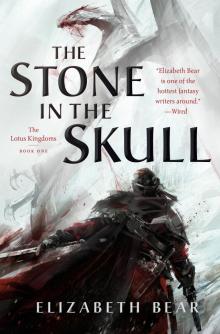 The Stone in the Skull
The Stone in the Skull Scardown jc-2
Scardown jc-2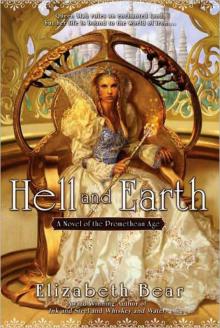 Hell and Earth pa-4
Hell and Earth pa-4 Undertow
Undertow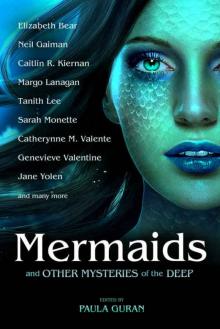 Mermaids and Other Mysteries of the Deep
Mermaids and Other Mysteries of the Deep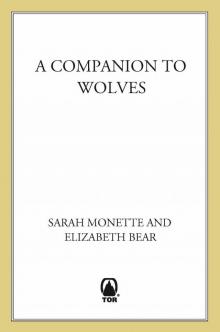 A Companion to Wolves
A Companion to Wolves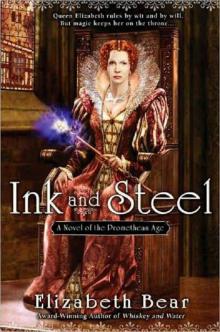 Ink and Steel pa-3
Ink and Steel pa-3